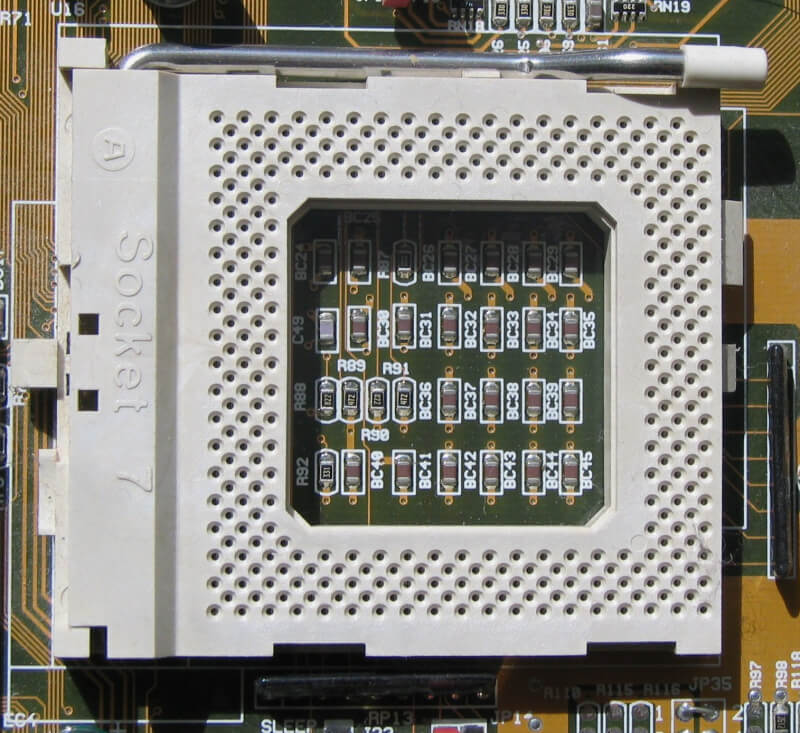Choose your answer and the correct choice will be revealed.

Did you know, there was a CPU socket that accepted both Intel and AMD chips?
Released in March 1994, Socket 5 was primarily designed for second-gen Intel P5 Pentium processors. However, it was also compatible with AMD’s K5 CPUs, the Cyrix 6×86 line (also co-branded with IBM), and IDT’s WinChip series. This made it one of the rare sockets to offer cross-brand compatibility.
In the summer of 1995, Socket 7 was introduced as the successor to Socket 5 (Socket 6 was essentially skipped). Socket 7 extended compatibility even further, continuing to support Intel Pentium processors as well as a wide range of third-party alternatives from AMD, Cyrix/IBM, and IDT. This socket became a popular standard for system builders due to its flexibility and longevity.
Socket 7 parts were also backward compatible with Socket 5 motherboards via an adapter – though adventurous users could attempt pin modifications by hand. The key technical difference between the two was the addition of an extra pin in Socket 7 to support dual split-rail voltage (separating I/O and core voltage), whereas Socket 5 only supported a single voltage rail.
By 1998, Super Socket 7 emerged as an enhanced version of Socket 7, mainly to support newer AMD K6-2 and K6-III processors.
It added support for a 100 MHz front-side bus and AGP graphics, offering better performance without abandoning the familiar pin layout. This upgrade was a strategic move by AMD, buying the company time to develop its own independent platform – Slot A – after Intel moved on to Slot 1 in 1997 and discontinued socket licensing to competitors.
Source link
